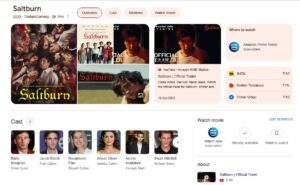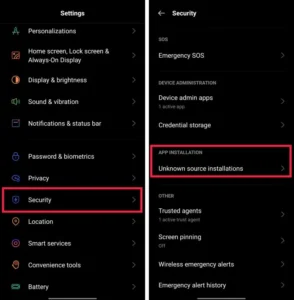Currently, the content that best helps to better interact with the public is videos. To create quality material, you must have a basic understanding of video editing.
“Video editing is a fundamental tool for anyone who is dedicated to creating content for web and social networks or to add value to their services as a professional photographer and videographer.”

Introduction to Video Editing
When it comes to video editing, there are three crucial points: cuts and transitions, general corrections and adjustments, and export. If you manage to master these three points, you will get quality videos that can be played on the device of your choice.
As for cuts and transitions, here we will rely on the script, a fundamental piece of the moment of pre-production. Scripting or at least organizing the previous shots saves us a lot of work when selecting them on the timeline.
Once you select the shots you want, you can perform transitions, dry cuts, fades, or perform motion montage. When you get to the color correction and general adjustments step, it will be time to correct the white balance, add creative filters, and place subtitles, for example.
Ideally, you can already have a pre-planned color palette and font selection to match the style of your video. Last but not least, there is the time of export. Here you must be very meticulous with the encoding, the video size according to the platform to be played, the audio quality, and other points that will ensure that your video can be played without problems.
Read on to understand the basics of video editing.
Basic Recommendations
One of the best recommendations, which are often overlooked due to lack of time or knowledge, is to stick to a script or shooting plan when editing.
A good editor is guided by the approved script and the list of shots that the assistant director has selected as possible. With that material, the task of collecting material is greatly streamlined, and the editor’s job is done more efficiently. Ideally, you can already have a pre-planned color palette and font selection to match the style of your video.
Lastly, try to be organized in the video editor you use. Use folders color labels and correctly name the shots you will use. These small steps will save you a lot of time in the total project in the long run.
Technical Aspects of Video Editing You Should Know
Like many other audiovisual disciplines, video editing is perfected with practice time, training, and content updating.
A very important part of being a good video editor is knowing the program you use thoroughly. Therefore, you can spend some time just exploring the program and seeing the options it allows you to make.
To obtain the desired results, you must pay attention to these technical aspects.
Video Formats and their Applications
Video formats have a direct impact on the playback quality of your content. Therefore, the appropriate format will give you the quality you are looking for and, depending on where you are going to play it. It will use the corresponding codecs.
So what are the different video formats for?
Basically, you use them according to the destination of your videos. Your goal may be cinema, TV, or internet display, quality during compression, or final file size.
There are many video formats, but here we will leave you a list of the most used:
AVI: developed by Microsoft and one of the first to be created. It stores audio and video on the same track, so it doesn’t provide the best quality.
WMV/WMA: Also developed by Microsoft, it is the replacement for AVI. It is compatible with YouTube, and its advantage is that its storage method allows you to play it even if it has not been completely downloaded.
MOV: is the competitor of AVI, created by Apple. It has much less quality loss than AVI and offers video and audio tracks in acceptable quality.
FLV: format developed by Adobe, it is widely used for Internet content due to its high compatibility with Flash Player and other players.
RM: Developed by Real Networks, it is an ultra-compressed format, it has a lot of quality loss, and you need to download a codec pack to make it work on Windows and Mac.
RMVB: pioneer in streaming platforms, also developed by Real Networks. It has low-quality loss and high compression capabilities, making it easy to play.
MP4: the most popular within mobile devices. It stores everything on the same track, which makes it very lightweight and doesn’t need any extra codecs, so it works in any application.
MKV: is an open format program, compatible with all applications but requires specific codecs to work. It codes and stores everything in the same container, which gives low-quality loss and very good final weight.
3GP: Developed specifically for mobile devices, direct competition from MP4. Its compression is very small, which makes it ideal for passing videos through messaging applications, Twitter, and others.
Compressions, Codecs, and Containers
It is good to know that what we call a container is what is known as a video format. This container, which can be any of the aforementioned video formats, contains video and audio tracks.
In order to play these video and audio tracks, which are compressed, you need codecs, for example, H264 or AAC, which are elements that allow you to compress or decompress the content stored within the container.
Why are videos compressed? Eliminating redundant information is necessary to ensure portability while ensuring that quality loss is low, at best.
The final result: your video compressed in MP4, you play it, for example, in the VLC player that has the corresponding codecs in your operating system, which allow the content to be decoded and you can view it correctly.
It is not necessary to know this literally, but it is necessary to understand it since it will depend on this that your video has good quality and can be reproduced properly.
Audio and Video Converters
The audio and video converters work when, if necessary, you want to open your video file, and the player does not allow it. You have free options like Format Factory, Video Converter, or Handbrake.
You can also put the video in Adobe Premiere or Adobe Encore and export it again in the correct format.
“The ideal is not to have to resort to video converters, since the loss of quality is quite high, when a second export is made on files that have already undergone compression. However, if you need them, they can be a useful option.”
Basic Edition Settings
In montage or video editing, all stylistic resources must be subordinated to the narration.
What does this mean? That you try to have the content and that everything that is aesthetic (color correction, filters, or effects) is used sparingly to accompany it.
Once you have followed the narrative thread that was established earlier in the script, you can perform color corrections, masking, animation effects, and add subtitles.
In general, with a bit of color balancing, correcting for overexposed areas, and adding graphics if needed, your video is ready to move on to audio correction.
We usually work on the track in the video, so “when you close the video track,” it’s time to start with the audio correction.
This is the time to clean and balance dialogues, add effects or soundtrack and check that there are no jumps throughout the entire audiovisual piece.
Meet the Main Video Editing Tools
If you want to dedicate yourself to video professionally, the ideal is to opt for one of the editing programs that are considered industry standards: Adobe Premiere®, Avid®, Da Vinci Resolve® or Final Cut®.
In YouTube Library, you can get royalty-free music, and on many pages, including Adobe, you can get free resources such as filters, small animations, or modern transitions.
Conclusion
Lose the fear of editing videos. With some practice, curiosity, and study, you will be able to get the most out of your audiovisual pieces.
Adding video editing to your knowledge will open you to many opportunities as a content creator or offer a differential service to your future clients.
Dare to experiment with video editing!




